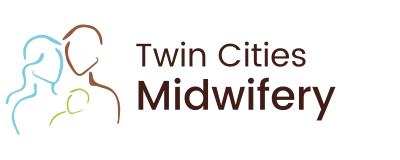19 Nov What Can You Do With A Placenta?
by Anna Bartels, TCM Apprentice
After baby is born, the birth is not yet complete, as there is still the process of third stage, during which the placenta is born. Usually this occurs within 15 minutes, but some placentas need longer. When the placenta finally comes, what should you do with it? Most common practice in hospitals is to automatically discard the placenta, but many parents are choosing to save the placenta for various reasons.
Most mammals in nature eat their placenta, an act which is called placentophagy (from “placenta” plus the Greek word for “eat”). Some think that mammals in the wild eat their placenta to hide evidence of a birth from predators, others posit that consuming the placenta after the birth can help animals to regain any nutrients and blood which were lost during birth. In addition, the placenta contains various nutrients and hormones which may be beneficial to a woman in the postpartum period. The placenta contains high levels of prostaglandins, which play an essential role in regulating the contractions of smooth muscles. As the uterus is comprised mainly of smooth muscles, in the postpartum period, consumption of the placenta can help to involute, or contract down, the uterus. This involution is essential to preventing postpartum hemorrhage. In fact, there are some midwives who may encourage a women who is bleeding excessively after birth to eat a piece of the raw placenta to stop blood loss. Consumption of the placenta over a period of days or weeks following the birth may also help the uterus to stop bleeding and return to pre-pregnancy size more quickly.
The placenta also contains smaller amount of oxytocin, sometimes deemed the “love” hormone. Some believe that consumption of the placenta can help a woman re-regulate her hormones after the birth. Advocates of placentophagy believe that eating the placenta can prevent postpartum blues or postpartum depression. In addition, oxytocin is highly involved in breast-feeding, so increased intake of oxytocin may help mammary glands to relax and express more milk.
So how, exactly, does one go about eating a placenta? There are a great variety of manners to prepare a placenta for consumption, but the most common way is to encapsulate the placenta. Encapsulation entails first cooking the placenta and then dehydrating it. Once it is dry, the placenta is then ground up and put into capsules (averaging about 100 capsules per placenta) which can be swallowed just like any other supplement. Recommendations on how to take these capsules vary, with some suggesting taking 3-4 pills a day until they are gone or taking the capsules only when one is feeling “blue” or “down.” Some women even save a portion of their placenta capsules to use during menopause in order to help balance hormonal levels at that time in their lives. Aside from encapsulation, if one wants to prepare the placenta in a more “food-like” manner, there are a variety of recipes available, including smoothies, cocktails, truffles, lasagna, stews and roasts.
Eating is not the only thing one can do with a placenta. In some cultures, the placenta is believed to be a revered organ with it’s own spirit. Some people bury it in a sacred space with the belief that doing so protects both mother and baby from illness. Others choose to have what is called a “lotus birth” where baby remains connected to the placenta until it dries up on it’s own and falls off. It is thought that leaving baby connected to the placenta for longer helps baby to be calm. Some places consider the placenta to be the baby’s twin, and thus something to be dealt with in a reverent fashion. Some bury it underneath the doorway, with the belief that doing so will mean the child will always return home. Burying a placenta under a tree is also common, with the placenta nourishing the roots and both tree and baby growing together. Other, less ceremonial manners of utilizing the placenta have also been utilized, including the commercial use of placenta extract in facial creams and fertility tonics. In addition, many individuals enjoy creating art from their placenta by rolling ink on it and creating a stamped print of the placenta.
A Twin Cities Midwifery, we will support whatever you choose to do with your own placenta. We can help you discard it or refer you to individuals who can help encapsulate it for you, just let us know.
Other Resources
Midwifery Today – The Bridge of Life
NY Magazine – The Placenta Cookbook




Sorry, the comment form is closed at this time.